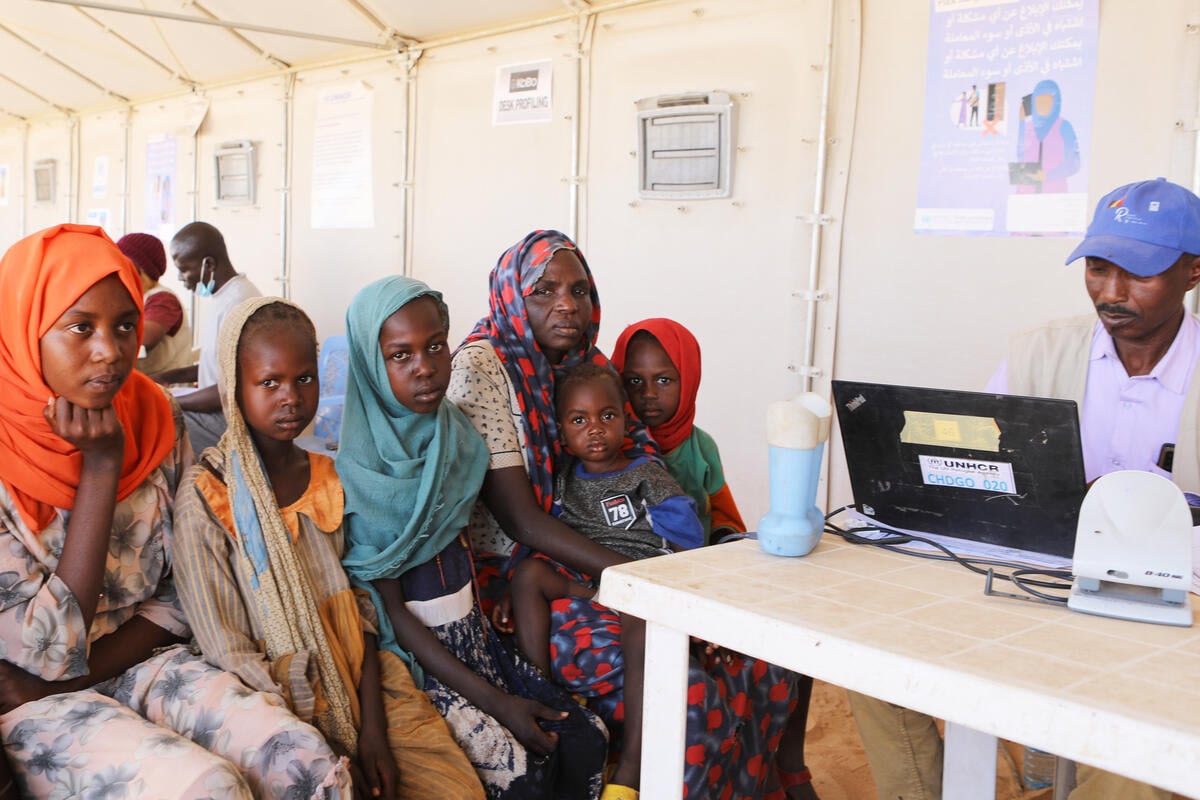Chad/Sudan: Flight both ways; Central Africans moved away from border
Chad/Sudan: Flight both ways; Central Africans moved away from border
Population movements in both directions along the insecure Chad/Sudan border are continuing, with some 100-125 Sudanese refugees now arriving at Gaga camp in eastern Chad every day. On Tuesday, we reported that in a worrisome new development Chadians were also fleeing to Darfur because of insecurity in Chad. So now we've got refugees going in both directions in this increasingly volatile region. In eastern Chad, since January, a total of 3,600 new arrivals have been recorded at Gaga camp, with 1,500 arriving in February alone. UNHCR teams report that two-thirds of the new arrivals are from villages located on both sides of the Chad-Sudan border, around the Chadian town of Adré. The rest have travelled from camps for internally displaced people in western and southern Darfur.
The new arrivals in Gaga say they left Darfur or the troubled border area out of fear over attacks by armed militia - janjaweed - or by various armed groups operating on both sides of the frontier. The refugees are arriving in Gaga on donkeys, on foot and in trucks from the border. Some refugees also bring their remaining livestock - much of it has been stolen. Most bring enough food for three to five days.
UNHCR is working with the government, the World Food Programme and other partners to expand and improve the reception area, the medical screening process and shelter distribution at Gaga. Once registered, refugees get a tent and other items such as blankets, mosquito nets, mats, jerry cans and a cooking kit.
Gaga refugee camp, with capacity for 20 000 refugees, now has a population of 10,000. Some 200,000 refugees who have fled Darfur since 2003 live in 12 refugee sites in eastern Chad.
Meanwhile, Assistant High Commissioner Judy Cheng-Hopkins has completed a two-day visit to UNHCR operations in south Chad, where some 47,000 refugees from the Central African Republic (CAR) are currently living. It was her first mission for UNHCR since Ms. Cheng-Hopkins assumed her position two weeks ago and reflects the importance we are placing on the worrisome crisis in the region. She also assessed our operations in eastern Chad earlier this week, and is in N'Djamena today for meetings with Chadian authorities, representatives of UN agencies, NGO partners, and members of the diplomatic community before returning to Geneva over the weekend.
In south Chad, UNHCR continues moving the latest CAR refugees away from the volatile border. Nearly 1,000 of them have been transferred to the Amboko refugee settlement further inland near the town of Goré. Since transfer operations began on 22 February, a total of 1,800 people have been moved to the safety of UNHCR's Amboko and Gondjé refugee settlements. They are among the latest influx of more than 5,000 refugees who have fled banditry as well as hostilities between rebel groups and government forces in the northern region of CAR since the beginning of February.
Meanwhile, following reports received by UNHCR on Monday from the Chadian Red Cross regarding additional arrivals of CAR refugees in Békan, another village in southern Chad located some 30 km west of Békoninga, UNHCR led a verification mission on Tuesday. The mission found that at least 1,000 refugees were present. UNHCR will begin screening and monitoring activities next week with the support of Chadian authorities. In the meantime, a mobile medical clinic has been sent by MSF-Holland to Békan.








